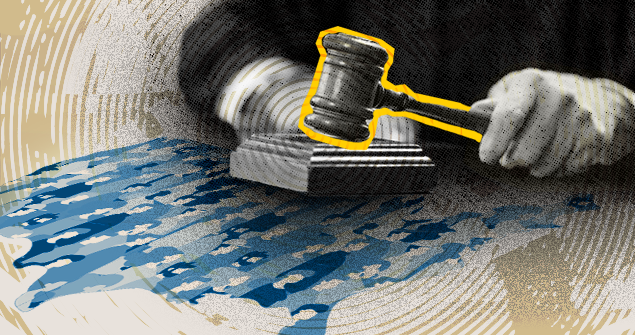
State Supreme Court Diversity — February 2020 Update
A diverse bench is crucial to achieving a fair system of justice and promoting public trust in our courts. Across the country, state supreme courts continue to fail to reflect an increasingly diverse U.S. population.

Part of
In July 2019, the Brennan Center released State Supreme Court Diversity, which detailed vast racial, ethnic, and gender disparities on state high courts across the country. Drawing on nearly 60 years of data, the study examined the factors that have contributed to a lack of diversity on the bench, including substantial racial disparities in judicial elections. This analysis updates the report with new data on the current composition of state supreme courts as of February 4, 2020.
Since we last collected data, which went through May 2019, there have been 19 openings on state supreme courts across the country. Fourteen of these vacancies have since been filled, 2 via elections and 12 via appointments. Half of these seats — seven in total — were filled by white men, including in four states where people of color make up over 30 percent of the population. Of the remaining seats, four were filled by white women, one by a Black woman, and two by a male and female Native American justice, respectively.
In the aggregate, there was little movement in the overall demographic composition of state high courts.
- Currently, 23 states have an all-white state supreme court bench, including 12 states where people of color are at least 20 percent of the population.
- While people of color make up nearly 40 percent of the population, only 15.5 percent of state supreme court seats are held by people of color, up 0.5 percentage points from May 2019.
- Only six states — California, Connecticut, Minnesota, North Carolina, Oregon, and Washington — have a supreme court bench where the percentage of people of color is higher than their representation in the state’s population as a whole (excluding states with open vacancies).
- With respect to gender diversity, women now hold 37 percent of state supreme court seats, up 1 percentage point from last year.
- Fifteen states currently have one or fewer female justices on their high courts. Florida stands out as the only state that currently has no female justices, with two vacancies on its seven-member high court.
At the same time, three states saw historic appointments.
Delaware. In a state where 23 percent of the population is Black, in January 2020, Tamika Montgomery-Reeves became the first Black supreme court justice in the state’s history. She is also the first person of color and only the second woman to reach Delaware’s highest court. From 2015 to 2019, Montgomery-Reeves served as the only Black judge on Delaware’s Court of Chancery, which is the second highest court in the state. With her appointment, there are now 12 states in the country that have never had a person of color serve on their state supreme courts and 17 states that have never had a Black justice.
Washington. Raquel Montoya-Lewis became the first Native American person to ascend to Washington’s highest court. She previously served as chief judge for three tribal courts in Indigenous communities in Washington.
Notably, while Washington uses judicial elections, all three of the justices of color currently sitting on its high court were initially appointed by the governor to fill an interim vacancy. By contrast, four of the six white justices first reached the bench through state-wide election. This is consistent with State Supreme Court Diversity‘s finding that historically, judicial elections have rarely been a path to the supreme court bench for people of color.
Oklahoma. In addition, in November 2019, Dustin P. Rowe, who is Native American, was appointed to the Oklahoma Supreme Court. He previously served on the Chickasaw Nation District Court, and earlier in his career he was the youngest mayor in the state’s history.
Prior to these two recent appointments in Oklahoma and Washington, there was only one sitting Native American state supreme court justice in the entire country, Justice Anne McKeig of the Minnesota Supreme Court. These new appointments come at the same time that Native Americans continue to be underrepresented in the legal profession as a whole. A 2015 study by the National Native American Bar Association highlighted contributing factors, including ways that discrimination and a dearth of support systems have posed hurdles to professional advancement for Native Americans in the law.
A diverse bench is crucial to achieving a fair system of justice and promoting public trust in our courts. Across the country, state supreme courts continue to fail to reflect an increasingly diverse U.S. population.


